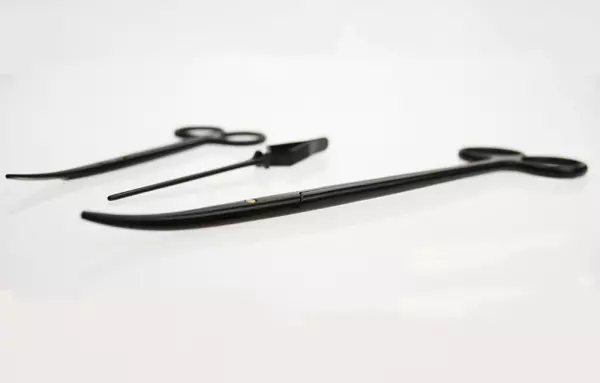
diBLACK-LINE - the new generation of surgical...
diBLACK-LINE – the new generation of surgical instruments from DIMEDA DIMEDA Instrumente of...
Portal and digital medical technology fair of the largest MedTech cluster in Germany

diBLACK-LINE - the new generation of surgical...
diBLACK-LINE – the new generation of surgical instruments from DIMEDA DIMEDA Instrumente of...

There are two types of aneurysm clamps: coiling and aneurysm clips. Both are used to close the aneurysm. Coiling is less invasive than clamping and may be preferred in some situations, such as when the aneurysm is small or in a location difficult to access. Aneurysm clamps are more popular in younger, healthier patients than those with sacciform aneurysms. However, while they're still relatively new, they've been around for decades.
Surgical clipping is a common surgical procedure for treating aneurysms. It is performed by isolating the aneurysm from normal circulation without blocking the small perforating arteries. The surgeon will create an opening in the skull called a craniotomy, and gently retract the brain to locate the aneurysm. The clip is then placed across the base of the aneurysm. The jaws of the clip close and pinch off the aneurysm from the parent artery. Multiple clips may be used in order to separate the aneurysm from its parent artery. The titanium clip will stay on the artery for the remainder of the patient's life.
Temporary clipping is a technique that is used in rare cases of small, unruptured aneurysms. Dissection of the parent artery is necessary in order to place a clip. The artery must be opened in order to get the best possible placement. It is important to remember that the aneurysm should not be too large to allow for a permanent clip. The clip should also be able to prevent bleeding after the procedure.
Clamping is a form of aneurysm surgery that requires anesthesia and surgical entry into the skull. Depending on the size and location of the aneurysm, the surgeon may use an aneurysm clip that features an atraumatic DeBakey jaws. Aneurysm clipping is a relatively simple procedure, but it requires the patient to be in good health.
There are different types of aneurysm clips. Some are atraumatic, while others are designed for atraumatic aneurysms. Most types of aneurysm clips come in many shapes and sizes, so it's important to find one that is right for your situation. Aneurysm clipping can reduce blood flow to the aneurysm, but it is not always the most appropriate method.
Aneurysm clips are used in a variety of medical procedures. Compared to the aneurysm clip, fenestrated clips are easier to apply than fenestrated clips. They also do not need MRIs. Unlike the former, a fenestrated clip is a type of aneurysm clip that is implanted inside the aneurysm.
There are risks associated with aneurysm clips. Aneurysm clipping can cause a stroke, aneurysms can bleed, and they can cause pain. Surgical treatment may not be appropriate in every case. Aneurysm clipping is not a permanent cure and can have complications. There is no guarantee that aneurysms will never heal completely, but it's essential to make sure your surgery is done properly.
Become a digital exhibitor yourself in the online portal of the largest and best-known MedTech cluster region in Germany and inform the world of medical technology about your products and services as well as about news, events and career opportunities.
With an attractive online profile, we will help you to present yourself professionally on our portal as well as on Google and on social media.